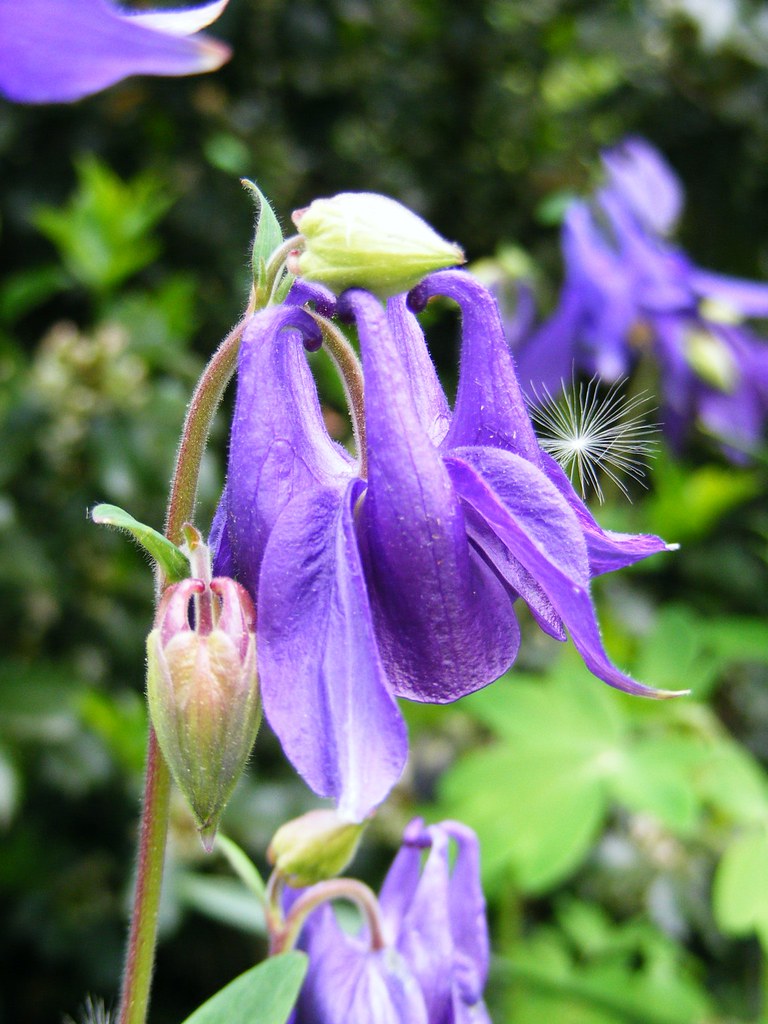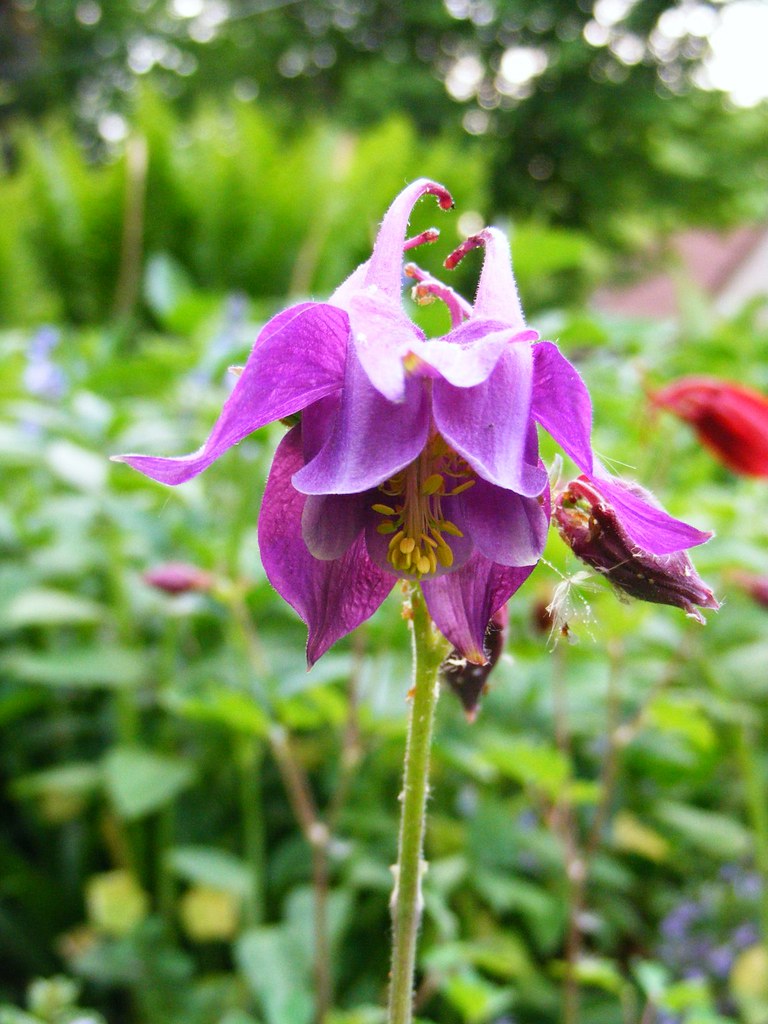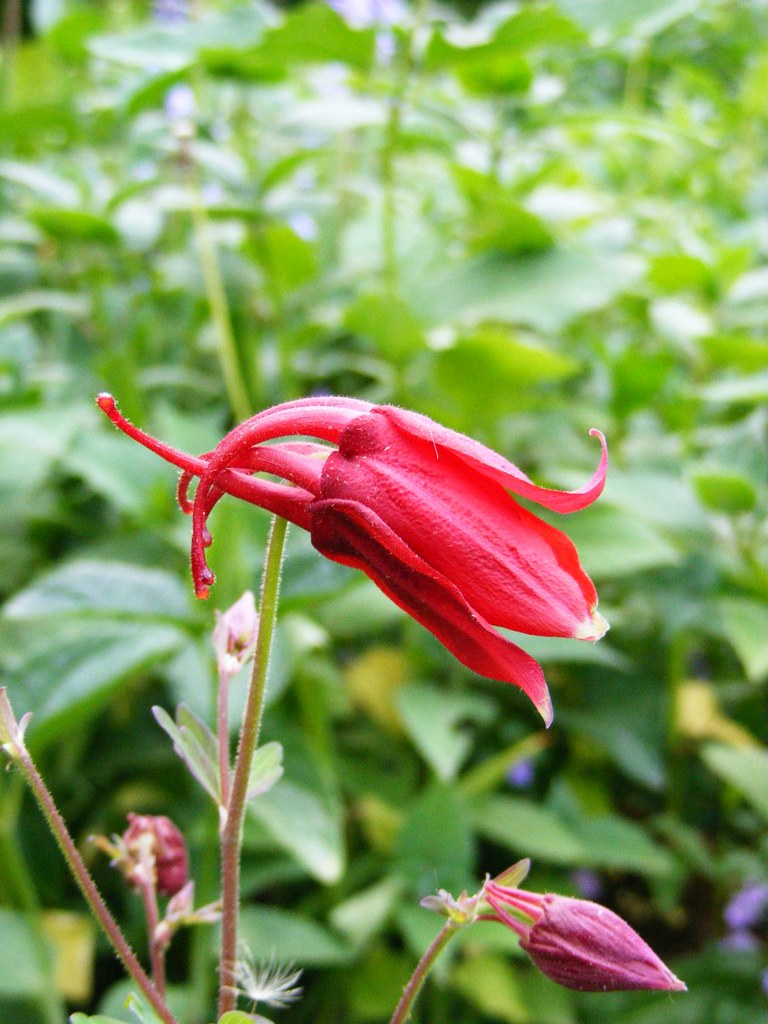
 Just in the past past few days, the Columbines (Aquilegia sp.) have really started to bloom in earnest, and if early indications are any sign, it looks to be a good year for them, despite the harsh winter. I haven't gone looking for all of them yet (we have them scattered about in the garden), but it sure looks like all the ones we really like are back and healthy this year. So ... for tonight's post, enjoy a few early previews of three of our prized specimens...
Just in the past past few days, the Columbines (Aquilegia sp.) have really started to bloom in earnest, and if early indications are any sign, it looks to be a good year for them, despite the harsh winter. I haven't gone looking for all of them yet (we have them scattered about in the garden), but it sure looks like all the ones we really like are back and healthy this year. So ... for tonight's post, enjoy a few early previews of three of our prized specimens...
IAboy, over at An Iowa Garden, posted some new Columbines ('Barlow' hyrbrids, I believe) he had purchased the other day and was talking about how these supposedly easy, incredibly lovely flowers have been such a challenge for him for many years. As such, he didn't hold out much hope for his new ones.
We share a similar history with him in that we tried in vain for several years to make Columbines happy in our garden ... with pathetic results for the most part. But we've learned a few things about them over the years and finally have seemed to met their needs, at least in several areas where we have them planted. At least at present ... We now think we've cracked a few of their secrets, which I'll share with you, if you, too, are struggling with making them grow.
The first mistake we made was buying all 'Barlow' Hybrid varieties, some of the fancier, more intensively bred cultivars. They never established themselves vigorously the first year and made one more lackluster appearance the following (with about 2-3 flowers, I recall), then promptly checked out without paying the floral bill. I don't even remember what the other colours were now, but the point is: every single one of them died pretty quickly. I'm sure some people are more successful with the 'Barlows,' and I commend them, but we're completely soured on them at this point. That doesn't mean that we wouldn't take in a homeless 'Barlow' (we'd probably give it a chance) but we wouldn't go looking for one either!
The second mistake we made was to plant them in too much shade, where they did try to grow, but never got very big, didn't bloom much, and also didn't stick around for more than 2-3 years. Contrary to what most instructions say, they are not a deep shade plant. They want and need at least several hours of pretty strong sun to perform really well. Our successful ones get a mix of east-south exposure early in the day, some east-north-west exposure in the afternoon, and those are the ones that are thriving for us .. at least for now.
The third conclusion to which we came merely acknowledged what we think to be simple fact: Aquilegia, technically speaking, is a perennial, albeit a relatively short-lived one. So we must be prepared for some inevitable die-off every year or so. Something we've been experimenting with a bit is to plant them in proximity, to allow the numerous seeds to fall and make a stand in the area, in order to replace the older ones as they die off. The results aren't in yet (these have only been there about 3 years), but we suspect that might also be one secret to success. Another strategy we've pursued (mine, mostly) is to buy two or three each year (preferably of these varieties) and plant them near the more established plants ... sort of hedging bets against the future, so to speak.
So far it seems to be paying off ... I'm envious when I chat or correspond with gardeners, for whom Columbines have achieved weed status in their yard/garden. And, from observations we've made driving around the city, they seem to do best and develop into real colonies on street corners! Our thinking now is that we pampered them to death with our first efforts (however misguided) and that they really prefer a poorish soil and more sun that usually believed. The Alpine Blues in this post are in an area that doesn't have a richer soil, but it has excellent rocky, sandy drainage ... At this point, we think that just might be the trick to establishing a larger colony of Columbines.
Some points to think about though, if you're considering adding Aquilegia to your perennial beds... I don't claim to be an expert, but that's been our experience so far.
Here are last year's blooms ... I'm constantly amazed between the colours on the old Fuji 2650, compared to the new S700! And here are the Alpine Blues from last year ... we LOVE the S700 now. It is our master ....
Photos by Fernymoss, 22 May, 2008. With the awesome S700 ...









3 comments:
Beautful ... love that little wisp of fluff in the first photo. Wow.
Count me as a lucky one -- columbines grow like weeds in my garden. They're so profilic and hardy. (Although I caught a groundhog nibbling on the new foliage the other day ...). For me they grow in sun - but also in semi-shaded areas. In fact, they just about grow wherever the seeds happen to land. It seems like once they reach a critical mass, they're unstoppable. :-) I've got those deep purple w/ cream IBs that I'd love to send to you. (Not the pink ones tho ... heh).
I'm so loving these new pix and blog posts IVG and FM. Great job!
Hey there Olivia! You certainly are a lucky one! Maybe one of these years ours will reach critical mass and start taking over ... at present, we're just happy they hang in there and keep coming back. I was looking at Columbines today at a garden center, but nothing reallyh caught my eye other than the Crimson Canadensis that they had. So far, I haven't found any more of the purples or the Alpine Blues, but if I do, I'll be snapping those up pronto!
And yeah, that purchase of the S700 was definitely an improvement! One of these days I'm going to RTFM and learn how to use the video so I can capture some Pepa cavorting around, lol! I suspect you might enjoy that ... :-)♠
I'm so surprised that some of you Iowans have trouble growing Aquilegias. I'm also one of those lucky gardeners with too many of them. I don't have any Barlows, but I have 4 different kinds of variegated Columbines. I'm glad you're finally able to have them return. They're so wonderful.
Post a Comment